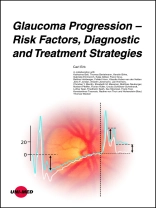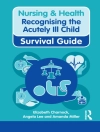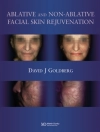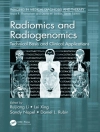Glaucoma is a progressive optic nerve neuropathy that leads to considerable visual disturbances over time. In order to keep the rate of progression as low as possible, we need to consider many different aspects that directly and indirectly affect progression of glaucoma. Over 16 chapters, distinguished authors shed light on the multifaceted scope of glaucoma progression and make many valuable recommendations on the difficult task of dealing with this.
Mục lục
1.Intraocular pressure as a risk factor for glaucoma progression 12
1.1.Intraocular pressure as a risk factor12
1.2.Fluctuations in IOP as a risk factor14
1.3.Measurement errors as risk factors for misjudging progression16
2.Glaucoma type as a risk factor for progression examplified by
pseudoexfoliation (PEX) syndrome19
2.1.Clinical characteristics20
2.2.PEX as a risk factor for the development of glaucoma20
2.3.PEX as a risk factor for glaucoma progression22
2.4.Histopathological basis of ocular hypertension22
2.5.Histopathological basis of reduced pressure tolerance23
3.Ophthalmological markers of progression26
3.1.Corneal thickness26
3.2.Corneal hysteresis28
3.3.Ocular pulse amplitude30
3.4.Myopia31
3.5.Transpapillary pressure difference34
3.6.Lamina cribrosa36
4.Systemic diseases as risk factors for glaucoma and their significance for
glaucoma progression39
4.1.Risk factors39
4.1.1.Lipid disorders40
4.1.2.Diabetes mellitus42
4.1.3.Hypertension44
5.Biochemical features as risk factors for glaucoma and their significance
for progression of glaucoma 57
5.1.Vascular dysregulation and glaucoma57
5.2.Biochemical markers of glaucoma progression58
5.2.1.Endothelin 158
5.2.2.Homocysteine63
5.2.3.Antiphospholipid antibodies69
6.The importance of biomarkers for glaucoma progression82
6.1.Genetic biomarkers in glaucoma82
6.2.Proteomic biomarkers in glaucoma83
7.Structural diagnosis of glaucoma progression88
7.1.Loss of neuroretinal rim (NRR)88
7.2.Loss of retinal nerve fibre layer thickness89
7.3.Disc margin bleeding as a biomarker of structural progression91
7.4.Changes in retinal vessels during the course of the disease94
7.5.Changes in the parapapillary retinal pigment epithelium94
8.Perimetric diagnosis of glaucoma progression97
8.1.Why perimetry?98
8.2.What is a visual field? The basics of the visual field99
8.3.What does a typical glaucomatous visual field look like?99
8.4.Conducting a visual field examination99
8.5.Evaluation of a visual field defect100
8.6.Determining whether progression has occurred101
8.7.Outlook103
8.8.References103
9.Electrophysiological diagnosis of glaucoma progression107
9.1.Electroretinograms (ERGs)107
9.1.1.Pattern-reversal ERG107
9.1.2.Flash ERG108
9.1.3.On and off ERGs109
9.2.Visual evoked potentials (VEPs)111
9.2.1.Blue-on-yellow VEPs112
9.2.2.Multifocal VEP113
10.The relationship between changes in function and structure in the
progression of glaucoma117
10.1.Metabolic processes in primary open angle glaucoma117
10.2.Clinical consequences120
10.3.Factors influencing the examination conditions120
11.Drop use as a risk factor for glaucoma progression 124
11.1.Evidence-based medicine in drug vs surgical treatment of glaucoma124
11.2.Specific aspects of drop use in the glaucoma patient125
11.2.1.Pharmacological factors influencing drop use125
11.2.1.1.Local bioavailability of the active substance125
11.2.1.2.Primary containers for antiglaucoma agents125
11.2.1.3.Drop techniques128
11.2.1.4.The use of drop aids131
11.2.2.Patient adherence in relation to drop use133
11.2.3.Monitoring of glaucoma with drop use135
12.Preservatives in ophthalmic drugs as a risk factor in the progression of
glaucoma138
12.1.Toxicity of preservatives138
12.2.Inflammation and fibrosis after long-term therapy with preservative-containing drops139
12.3.Clinical aspects139
12.4.New developments in the preservation of ophthalmic drugs140
13.Communication as a risk factor for glaucoma progression 142
13.1.Communication is an effect – not an intention142
13.2.We cannot not communicate: importance of gestures 143
13.3.The relationship level determines the factual level144
13.4.Benefit-oriented speech145
13.5.The question146
13.6.Active listening146
13.7.I-messages147
14.Psychological changes during the course of glaucoma 148
14.1.Psychosomatic change caused by crises as part of chronic illness148
14.2.Mechanisms to resolve conflict148
14.3.Adaptation and defence processes148
14.4.Anxieties about blindness150
14.5.Sociocultural environment151
14.6.The patient’s anxiety and conflict situations152
14.7.Sensitive doctor and patient communication153
15.Surgical strategies in glaucoma progression 155
15.1.Value of pressure lowering through surgery in the treatment of glaucoma155
15.2.Surgical procedures157
15.2.1.Trabeculectomy/epibulbar drainage devices157
15.2.2.Non-fistulating surgical methods159
15.2.3.Stents161
15.2.4.Laser surgery162
16.Practical recommendations for everyday life of glaucoma patients taking
into account progression167
16.1.Dietary recommendations (general, antioxidants)167
16.2.Glaucoma and acupuncture/relaxation methods169
16.3.Homeopathy and anthroposophic medicine169
16.4.Glaucoma and body posture169
16.5.Intraocular pressure and playing musical instruments169
16.6.Glaucoma and exercise169
16.7.Glaucoma and sauna171
16.8.Glaucoma and driving171
17.Abbreviations174
Index175












